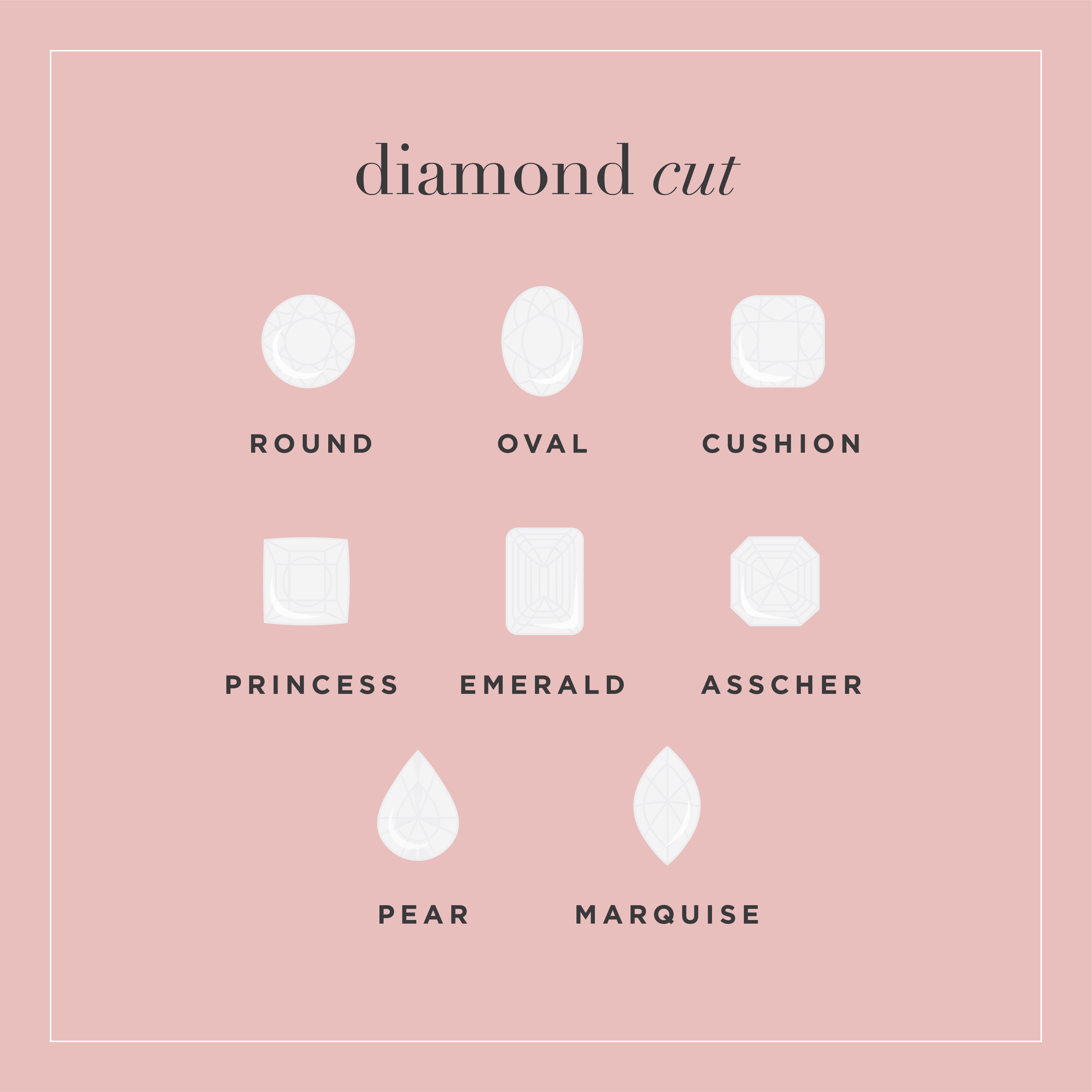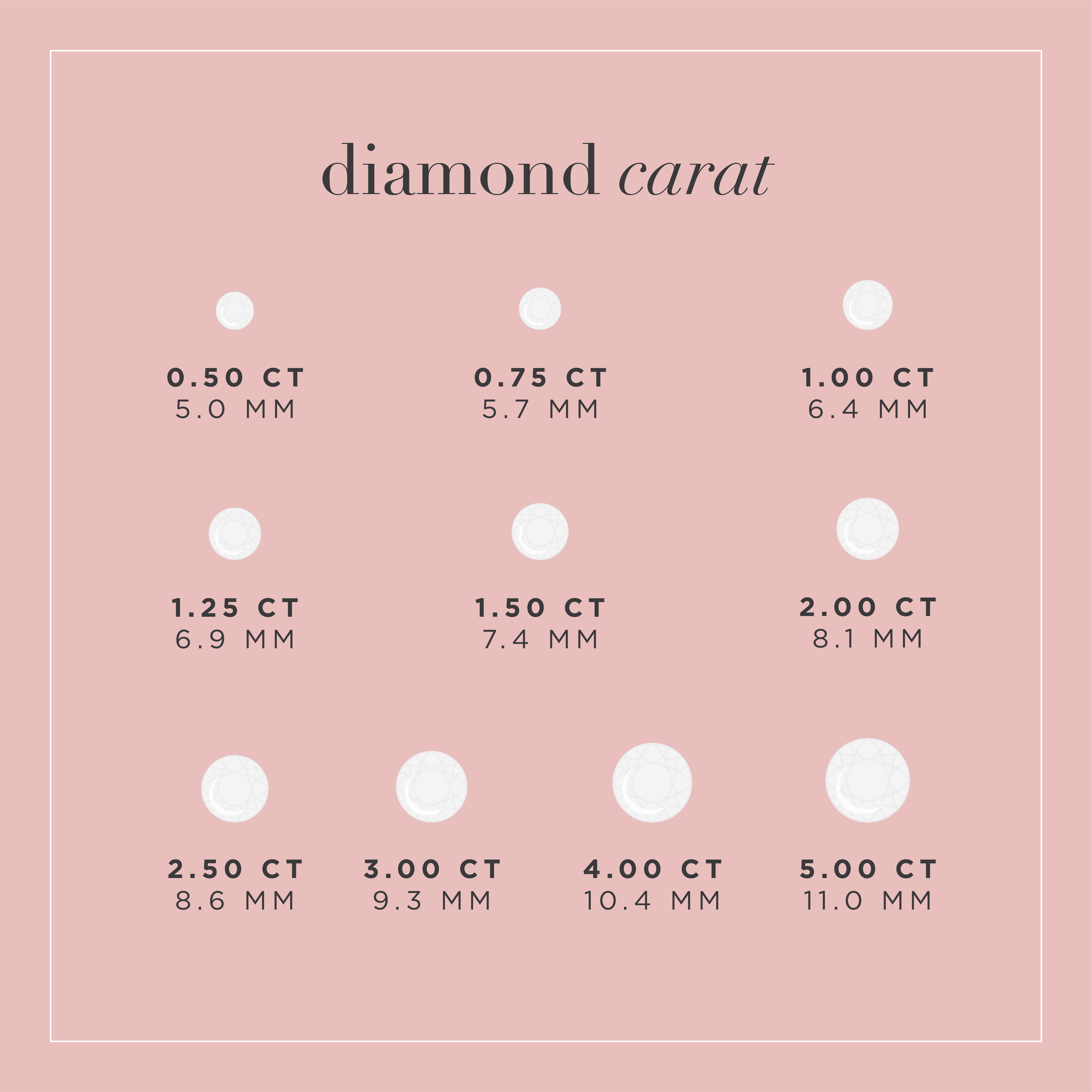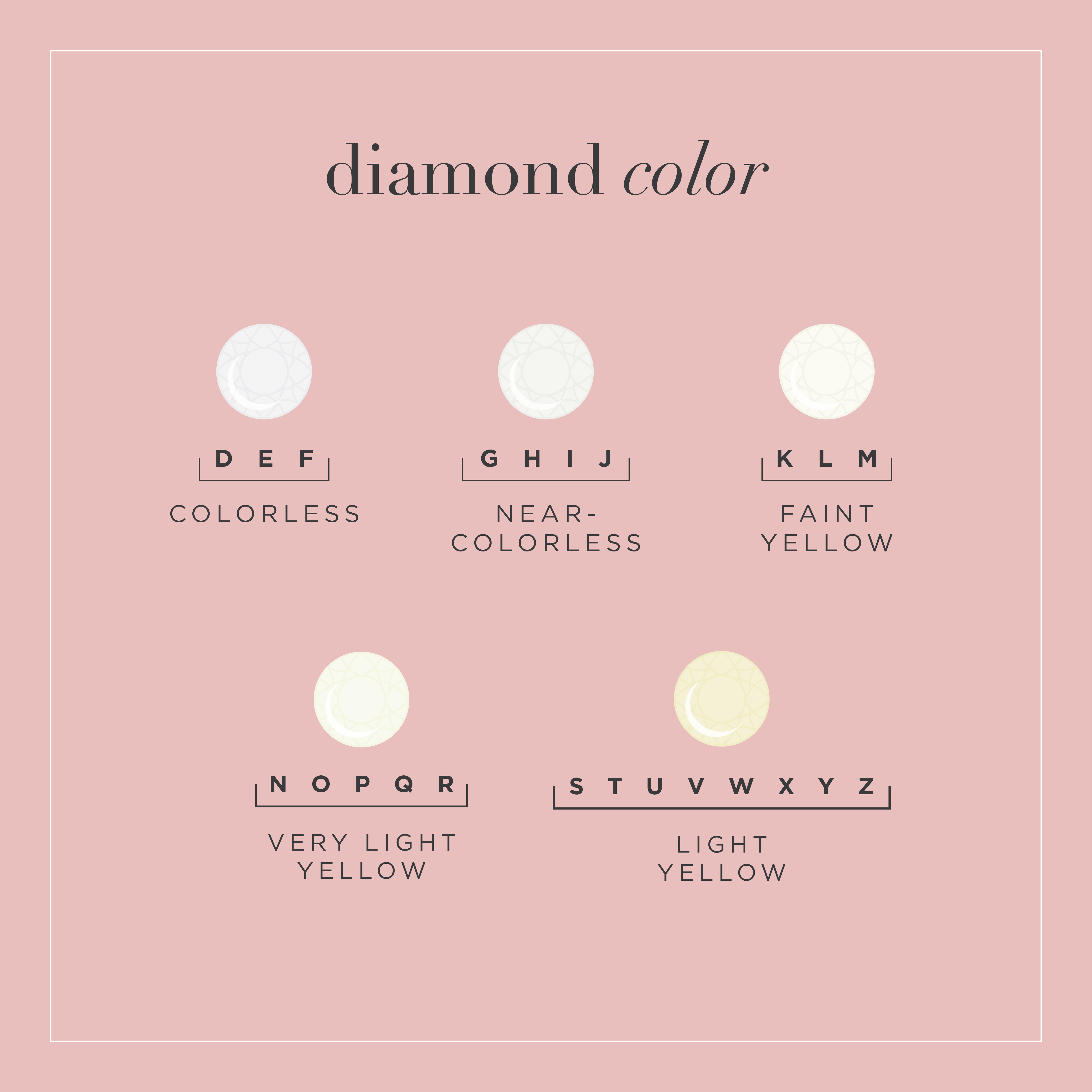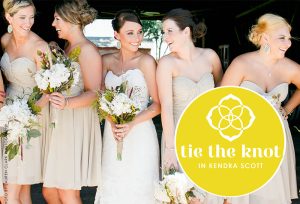After stalking all the Pinterest boards and dropping *enough* hints to your partner, you’ve finally decided on the perfect design for your ideal engagement ring. Or, maybe, you’re looking into finally taking the jump into buying the sparkly beauty, but you have no idea where to start, let alone even begin looking for. Either way, or wherever you may be in between, one of the first steps when it comes to ring shopping is understanding the 4 Cs of a diamond – cut, carat, clarity and color – and navigating how you’ll piece them all together to create a one-of-a-kind, budget friendly ring to have forever. Scroll through our handy guide below to get all the info you need to know about the 4 Cs before you get into buying that dream ring – cheers!

Diamond Cut
Round cut: A classic circle shape also known as “standard round,” this cut flatters all fingers and because of the cuts made to the diamond and the way light reflects off those facets, is also the most sparkly!
Oval cut: A universally flattering cut for any hands, ovals have great brilliance and uniqueness.
Cushion cut: Somewhere between a circle and a rectangle, the cushion cut has rounded edges and corners and offers exceptional brilliance with a vintage aesthetic. This style is flattering on wider fingers.
Princess cut: The square shape that looks great on any hands, the princess cut can be both classic or contemporary, depending on how it’s set.
Emerald cut: With its mirror-like, elongated rectangular cuts, the linear facets on emerald-cut diamonds create eye-catching flashes of light rather than a typical dazzling sparkle. This cut is totally vintage in nature and has a finger-elongating effect.
Asscher cut: Known for its exclusive X shape, the Asscher cut is similar to the emerald cut because of its mirror-like, step-down facets and overall brightness, rather than sparkly brilliance. This cut is perfect for the bride who appreciates Gothic or Art Deco style.
Pear cut: Another elongating style, the pear cut resembles a teardrop and offers a dainty, timeless look.
Marquise cut: Similar to a football shape, the marquise cut is less popular and a great choice for the bold, one-of-a-kind bride!
PRO TIP: Keep in mind that elongated cuts like oval, pear and marquis will offer more bang for your buck, as the surface area is large compared to the actual carat size. You’ll be able to get a larger-looking diamond for a lower price.

Diamond Carat
A carat refers to the unique unit of weight measurement used exclusively to weigh gems and diamonds. One metric carat is equal to 200 milligrams in weight (or 0.2 grams) and is the most influential factor when it comes to the price of your diamond. Carat weight is not at all related to sparkle, so don’t let that factor into picking your perfect diamond! Diamond carat weight is based off of a point system. If you think of a carat weight as equal to 100, each point is 0.01 of a carat. For example, a “90 pointer” is another way of referring to a 0.9o carat diamond.
When looking at diamonds, it is crucial to note that the cut of your diamond influences the size more than the carat – the carat is just the weight! Two stones with the same shape and carat weight can look very different depending on the cut of the diamond you choose. Also, the setting you choose can make a diamond appear larger, with the most popular being a halo setting which features a ring of smaller diamonds around the center stone.
PRO TIP: Look for diamonds that fall just under popular carat weights (such as a 0.90 carat diamond). Diamonds of these weights fall just shy of popular weights and are often sold at a slightly discounted price.

Diamond Clarity
Diamond clarity refers to the assessment of small imperfections that are found on the surface and within each diamond – like birthmarks! A “blemish” is a flaw that can be found on the surface of a diamond, while “inclusions” (sometimes called “internal characteristics”) are internal defects that are usually not seen to the naked eye.
Diamonds are graded on a 6 category, 11 clarity grade scale:
- I1, I2, I3 (included diamonds): I clarity diamonds have obvious inclusions that are likely to be visible to the naked eye and impact the beauty of the diamond.
- SI1, SI2 (slightly included diamonds): If the diamond is eye clean, it will usually be the best value. SI2 inclusions may be detectable to a keen unaided eye, especially when viewed from the side.
- VS1, VS2, (very slightly included diamonds): These diamonds have minor inclusions ranging from difficult (VS1) to somewhat easy (VS2) to see at 10x magnification.
- VVS1, VVS2 (very very slightly included diamonds): There are minuscule inclusions that are difficult even for trained eyes to see.
- IF (internally flawless diamonds): Some small surface blemishes may be visible under microscope. There are no inclusions within these diamonds, only surface characteristics.
- FL (flawless diamonds): Flawless diamonds have no internal or external characteristics but are very rare and are the most expensive.
5 factors that influence the clarity of diamonds:
- Size: The larger or more noticeable the blemish or inclusion, the lower the clarity grade.
- Number: The amount of easily seen characteristics – fewer characteristics means higher clarity grade.
- Position: Placement of each of the characteristics on the diamond.
- Nature: What type of inclusion it is and the impact it has on the durability of the diamond.
- Color and Relief: A measure of how easily a characteristic is seen or how much contrast there is between the characteristic and the surrounding diamond.

Diamond Color
Diamond color is the natural color or lack of visibility found within a diamond and is a measure of rarity, not the quality of the diamond.
Color in gems is the result of 3 different components:
- Hue: Basic impression of color
- Tone: Relative lightness or darkness
- Saturation: Strength, purity and intensity of the hue
Diamond color is measured on a D-Z scale, with the D grade appearing icy white and Z featuring a pale yellow hue. Most diamond jewelers only offer diamond grades D-J:
- D (colorless): Absolutely colorless or icy white. The highest color grade of diamonds. D diamonds are extremely rare and the most expensive.
- E (colorless): Only minuscule traces of color can be detected by an expert gemologist. E diamonds are a rare, high quality diamond.
- F (colorless): Slight color can be detected by an expert, but they are still considered a “colorless” grade.
- G-H (near colorless): Color is noticeable when compared to diamonds of better grades.
- I-J (near colorless): There is slightly detected color in these diamond grades.
PRO TIP: Diamond grades G-J will be the best value diamond to the naked eye as colorless. G-H diamond grades are best for diamonds that are going to be over 1 carat in weight and I-J diamonds will be the best grade for diamonds under 1 carat weight.
Now that you’ve had a chance to learn the 4 Cs of diamond quality – you’re ready to shop! Head to one of our favorite local jewelers to find or custom design your dream engagement ring!
































































